Natural Polyherbal Sources for Supplementing Vitamin e in Animal Nutrition
Natural Polyherbal Sources for Supplementing Vitamin e in Animal Nutrition
By: Ray Jones, Marcelo Paolella and Hamilton Ida.
Nearly 100 years after its discovery in 1922, is practically consensual that supplementing with Vitamin E is recommended for optimum nutrition in production animals and pets. Ever since Vitamin E synthesis was achieved in 1938, as alpha-tocopherol acetate, its use for diet supplementing has been employed to ensure the health, fertility, productivity and longevity of the different species. However, the latest research has raised new questions on whether supplementation using synthetic Vitamin E (alpha-tocopherol acetate), is the most efficient and effective means.
There is proof that the natural forms of Vitamin E (found in nature as tocopherols and tocotrienols) can be more efficient and effective as a supplement than synthetic forms, thereby providing greater benefits than those of alpha-tocopherol acetate.
Vitamin E (alpha-tocopherol) is recognised as a powerful antioxidant, essential for the preservation and integrity of cell membranes and an effective compound for preventing and treating oxidative stress. However, alpha-tocopherol does not work on its own. It requires other antioxidants, such as ascorbic acid (vitamin C), glutathione, superoxide dismutase, etc., to be recycled and fully function. In fact, without these complementary antioxidants, alpha-tocopherol can become a pro-oxidant and cause lipid peroxidation. In a nutshell, alpha-tocopherol will work better in combination with other antioxidants.
Natural vitamin E compared to synthetic vitamin E
The term Vitamin E refers to a group of 8 fat-soluble compounds in their natural form , with antioxidant activities, classified in 2 families – tocopherols and tocotrienols, which are broken down into 4 subfamilies – α (alpha), β (beta), γ (gamma), and δ (delta). α-tocopherol is the most abundant form in the green part of plants, while tocotrienols are chiefly found in seeds.
These compounds are antioxidants, which means they protect the plant from the toxicity of oxygen. Tocopherols and tocotrienols scavenge the peroxy radicals from lipids, thereby preventing the spread of lipid peroxidation in membranes, while the subsequent products of tocopheroxyl and tocotrienoxyl radicals, respectively, are recycled into tocopherols and tocotrienols thanks to the synergistic action of other antioxidants. Moreover, tocopherols and tocotrienols protect lipids and other components of the membrane by physically suppressing and chemically reacting with the singlet oxygen (Munné-Bosch & Alegre, 2010)
α-tocopherol is known to comprise the greatest biological activity and maintain the highest concentrations in animal and human plasma and tissues. The α-tocopherol naturally produced by plants is presented in a single form: the stereoisomer RRR. Since this is the form produced in nature, as expected, it is fully recognised and usable by organisms; i.e., α-tocopherol RRR shows the greatest biological activity as Vitamin E.
However, the most common form of Vitamin E used for supplementing animal feed is the synthetic form (all rac-α-tocopherol). This form is chemically synthesised from a catalysed reaction between trimethylhydroquinone and isophytol, which is subjected to high-vacuum molecular distillation, resulting in purified dl-α-tocopherol.
dl-α-tocoferol, obtained through chemical synthesis, is composed of a blend of 8 stereoisomers of α-tocopherol in equivalent amounts, which are distinguished by three-chiral-carbon formations in the positions 2, 4’ and 8’: RRR, RSR, RRS, RSS, SRR, SSR, SRS and SSS-α-tocopherol. While all of them show in vitro antioxidant activity, only the forms with the R formation in position 2 present biological activity as Vitamin E in organisms. The dl-α-tocopherol contains just 12.5% RRR-α-tocopherol (similar to the natural version).
Due to its instability, to be usable in diets, purified dl-α-tocopherol has to be subjected to esterification, generally carried out using acetic acid (another chemical process), resulting in alpha-tocopherol acetate, the most common commercial form of synthetic Vitamin E supplements and additive.
Absorption and metabolisation
Natural α-tocopherol, while contained in plants, is naturally protected by their cell structures, which endows it with natural stability. Furthermore, it comes in a form that is readily absorbed upon reaching the intestine, since it is not esterified and is 100% in the RRR form.
On the other hand, upon arriving at the small intestine, α-tocopherol acetate (synthetic Vitamin E) needs to be hydrolysed by a pancreatic esterase in order to release the α-tocopherol, which can then be included in a lipid phase and absorbed. This additional step, required for intestinal absorption, can generate problems for certain types of animals, such as weanling piglets and very young poultry chicks, due to a longer absorption time compared to natural Vitamin E (Wilburn et al., 2008).
Both forms of Vitamin E – natural and synthetic – are absorbed by the intestine and transported by chylomicrons to the liver, and there is basically no distinction between the different isomers. However, once it reaches the liver, the α-Tocopherol Transfer Protein (α-TTP), which is responsible for transferring the α-tocopherol from the liver and distributing it to the body tissues, is specific to the natural RRR form of α-tocopherol. The α-TTP can transport the RRR form, and little to nothing of the other forms. These other forms are subsequently metabolised in the liver and ultimately excreted without performing any function similar to that of Vitamin E in the body (Chung et al., 2015; Hosomi et al., 1997; Lim & Traber, 2007; Traber & Arai, 1999).
In short, a small part of the dl-α-tocopherol is transferred from the liver to the rest of the body to act as Vitamin E, but a large part is simply metabolised and excreted.
Sources of Vitamin E in animal feed
dl-α-tocopherol acetate (synthetic Vitamin E)-based products are the supplementary source of Vitamin E most commonly used in production animal feed. On top of being a chemically synthesised source, as previously mentioned, it is an acetate requiring a digestive stage, and contains only 12.5% of RRR-α-tocopherol.
There are also products on the market that obtain α-tocopherol from vegetable oils. These are obtained from the original raw material after various steps of a chemical process. Moreover, given the unstable nature of the α-tocopherol after being extracted from plants, these products also use esterification to provide stability; i.e., they are α-tocopherol acetate-based products requiring a hydrolysis stage in the intestinal tract so they can be absorbed. Depending on the entire chemical processing, they should be referred to as “natural-derivatives” and not “natural.” However, these products contain only α-tocopherol in the RRR form, greatly distinguishing them from synthetic sources containing dl-α-tocopherol. The main limitation of their use in animal nutrition is their high cost compared to synthetic sources.
Part of the Vitamin E that production animals need comes from the ingredients in their diet. These are tocopherols and tocotrienols in the genuinely natural form. As previously described, not only do they contain a high degree of biological activity and are naturally stable (due to the protection of vegetation cell structures), but they are also associated with other natural antioxidants that recycle tocopherols and tocotrienols. Still, said levels can be greatly variable due to several factors, including the quality of the ingredients and their state of preservation. This is why, for many species, nutritionists choose to ensure suitable levels using specific sources of Vitamin E that are added to the feed.
Then what could be the solution for ensuring natural vitamin E levels in formulated animal diets?
In this regard, to ensure the required levels of Vitamin E using genuinely natural sources, there are products on the market based on herbal formulations. Herbs such as holy basil or tulsi (Ocimum sanctum) and Indian gooseberry or amla (Emblica officinalis), among others, are recognised for their antioxidant and protective effects, having been used for thousands of years in Ayurvedic medicine.
Whereas their use previously occurred through empiricism, experience and knowledge passed on from one generation to the next, today there are countless types of scientific proof clearly showing their forms of action. The complex mechanisms and associations among their various components are currently the subject of numerous scientific studies.
From what is already known, we can point out that 100% of the α-tocopherol contained in these herbal blends is in the RRR configuration. In addition, they contain not only α-tocopherol, but also all other forms of Vitamin E (tocopherols and tocotrienols), as well as compounds known as phenyl propanoids, which act synergistically with Vitamin E, contributing toward recycling and bioavailability for longer. The different forms of Vitamin E present in herbal sources comprise complexes with phospholipids that endow them with stability and a lipid base for improved intestinal absorption.
Numerous scientific reports show that, in pigs, poultry and livestock, the combination of polyphenolic compounds and Vitamin E is more effective in terms of antioxidant activity than Vitamin E on its own (Lipinski et al., 2017; Fotina et al., 2013).
The cost of herbal products to supplement Vitamin E can be competitive compared to synthetic sources, but there are challenges to safe supplementing. Not only is it necessary to achieve a proper blend, which promotes optimum interaction between components to properly play the role of Vitamin E, but also the quality of said herbal blends for ensuring the consistency of its composition is essential. This requires suppliers to not only have in-depth knowledge of the interaction between the herbs and their effects on organisms, but also to have a strict and full control over the supply chain, including the production of herbs and complex analytical methods enabling them to control the quality of their raw materials and of the end products.
Thus, the supplementing of Vitamin E through reliable herbal sources in animal feed is not only better for the type of α-tocopherol provided, but also given the association with other naturally occurring antioxidising compounds that interact synergistically, as well as the economic benefit.
Results of tests with herbal sources
Studies comparing the efficacy between supplementing of Vitamin E in animal diets with synthetic sources (standard in the animal nutrition industry) and herbal sources have been performed in the last few years.
The studies given below show the answers of dietary supplementation of natural Vitamin E with a specific commercial product comprising a herbal blend (among others, Ocimum sanctum and Emblica officinalis), compared to synthetic Vitamin E in broilers.
In the test conducted by Chatterjee et al. (2006), there were no significant differences between poultry fed with 50 mg/kg of the herbal blend and with 100 mg/kg of synthetic Vitamin E. While Vitamin E levels in the liver were higher in the poultry supplemented with any of the Vitamin E sources, the highest level was achieved by supplementing with the commercial herbal product. This higher Vitamin E concentration in the liver is an indicator of the greater bioavailability of herbal vitamin E and/or the reduction of its excretion rate compared to synthetic Vitamin E.
The results of the experiment by Das et al. (2009) show that the herbal blend with Ocimum sanctum, Emblica officinalis and other herbs was safe at rates up to 20 times the recommended dose, presenting no hematopoyesis or kidney or liver toxicity after 90 days of oral administration of the product.
Conclusions
Vitamin E supplementing is recognised as being beneficial and profitable in animal production. The supplement commonly used for this purpose is dl-α-tocopherol acetate (synthetic Vitamin E), generally at 50%, which, according to recent research, is not the most efficient and effective means of supplementation.
Herbal blends with Ocimum sanctum, Emblica officinalis and other herbs are genuinely natural sources of Vitamin E, comprising many benefits over synthetic Vitamin E for animal production, as:
- They provide natural Vitamin E, 2 to 3 times more bioavailable for animals when compared to synthetic Vitamin E;
- Natural Vitamin E is more efficiently absorbed than synthetic Vitamin E;
- They provide not only more biologically available α-tocopherol, but also all forms of Vitamin E (tocopherols and tocotrienols), whereas the synthetic Vitamin E provides only dl-α-tocopherol acetate, and only a small part of this is found in the more biologically available form;
- They also contain a variety of phenolic compounds that complement, improve and preserve the activities of Vitamin E when consumed by animals;
- They provide Vitamin E in the form that nature has intended to be used more efficiently; animals with access to natural forms of Vitamin E have performed as well or even better than animals supplemented with synthetic Vitamin E.
The use of polyherbal blend-based commercial products enabled partial or complete substitution of synthetic Vitamin E 50, ensuring equivalent or higher production levels.
Bibliography
Chandrahas, Y.S. and Nagra, S.S. 2009. Effect of synthetic and herbal vitamin E on the semen quality of cockerels. Phytomedica Vol. 10 2009 83-86.
Chatterjee, S. and Agrawala, S.K. 2005. Comparative antioxidant efficacy of Herbal E-50 and synthetic vitamin E.
IPSACON 2005. Indian Poultry Science Association XXIII Conference & National Symposium 2005. Vol. 2 Abstracts.
Chatterjee, S., S.N. Das, B.P. Singh, A. Sharma and Agrawala, S.K. 2006. Effect of dietary supplementation of Herbal E on production performance and other parameters of commercial broilers. Livestock International Nov. 2006.
Chung, S., J. Atkinson, R. Parker and Manor, D. 2015. Intracellular trafficking of vitamin E by the α-tocopherol transfer protein. FASEB J. vol. 29 no. 1 Suppl. 886.5 http://www.fasebj.org/content/29/1_Supplement/886.5
Dani, K.C., R.K. Sharma, A. Kumar and Singh, S.K. 2009. Efficacy of Herbal vitamin E and synthetic vitamin E supplementation on the performance of broilers. Phytomedica Vol. 10 2009.
Fotina, A. A., V. I. Fisinin and Surai, P. F. 2013. Recent developments in usage of natural antioxidants to improve chicken meat production and quality. Bulg. J. Agric. Sci. 19(5):889-896.
Hosomi, A., M. Arita, Y. Sato, C. Kiyose, T. Ueda, O. Igarashi, H. Arai and Inoue, K. 1997. Affinity for alpha-tocopherol transfer protein as a determinant of the biological activities of vitamin E analogs. FEBS Lett. 409:105–108.
Jane Higdon, Ph.D. Instituto Linus Pauling Universidad Estatal de Oregon. Centro de Información de Micronutrientes » Vitaminas » Vitamina E
Lim, Y. and Traber, M. 2007. Alpha tocopherol transfer protein (α-TTP): Insights from alpha-tocopherol transfer protein knockout mice. Nutr. Res. Pact. 1(4):247-253). https://www.ncbi.nlm.nih.gov/pmc/articles/PMC2849030/
Lipinski, K., M. Mazur, Z. Antoszkiewicz and Purwin, C. 2017. Polyphenols in monogastric nutrition – A review. Ann. Anim. Sci. vol. 17 no. 1:41-58. https://www.degruyter.com/downloadpdf/j/aoas.2017.17.issue-1/aoas-2016-0042/aoas2016-0042.pdf
Sergi Munné-Bosch & Leonor Alegre (2010) The Function of Tocopherols and Tocotrienols in Plants, Critical Reviews in Plant Sciences, 21:1, 31-57, DOI: 10.1080/0735-260291044179
Traber, M. G. and Arai, H. 1999. Molecular mechanisms of vitamin E transport. Annu. Rev. Nutr. 19:343-355.
Wilburn, E. E., D. C. Mahan, D. A. Hill, T. E. Shipp and Yang, H. 2008. An evaluation of natural (RRR-alpha-tocopheryl acetate) and synthetic (all-rac-alpha-tocopheryl acetate) vitamin E fortification in the diet or drinking water of weanling pigs. J. Anim. Sci. 86(3):584-591. https://www.ncbi.nlm.nih.gov/pubmed/18156353
Read more at
Nuproxa's Blog
Nuproxa Group and Bluejais sign Strategic Alliance
The partnership between Swiss and Dutch companies will launch new innovative products for poultry, p...
+Nuproxa Mexico signs strategic alliance with Innovad and Herbonis
The alliance will add to the Mexican portfolio products such as Panbonis®, a natural and bioactive ...
+Nuproxa Group Appoints Dr. Goetz Gotterbarm as CEO, Making a New Era of Leadership
Etoy, Switzerland January 2024 – Nuproxa Group, a leading player in natural animal nutrition a...
+Nuproxa launches new Mission and Vision focused on innovation, nutrition and animal welfare
Etoy, August 2023 – Nuproxa, a pioneer in providing natural solutions for animal health and nu...
+Read more at
Nuproxa's Blog
Nuproxa Group and Bluejais sign Strategic Alliance
The partnership between Swiss and Dutch companies will launch new innovative products for poultry, p...
+Nuproxa Mexico signs strategic alliance with Innovad and Herbonis
The alliance will add to the Mexican portfolio products such as Panbonis®, a natural and bioactive ...
+Nuproxa Group Appoints Dr. Goetz Gotterbarm as CEO, Making a New Era of Leadership
Etoy, Switzerland January 2024 – Nuproxa Group, a leading player in natural animal nutrition a...
+Nuproxa launches new Mission and Vision focused on innovation, nutrition and animal welfare
Etoy, August 2023 – Nuproxa, a pioneer in providing natural solutions for animal health and nu...
+Natural Polyherbal Sources for Supplementing Vitamin e in Animal Nutrition
Nearly 100 years after its discovery in 1922, is practically consensual that supplementing with Vita...
+Improving production efficiency by controlling protozoa via herbal blend
The continuous improvement of production efficiency in industrial poultry farming still remains an e...
+Importance of the use of liver protectors in the production output of broilers
The liver is the organ performing the largest number of vital functions indispensable for the animal
+Importance of the use of liver protectors in the production output of broilers
The liver is the organ performing the largest number of vital functions indispensable for the animal...
+Dorsal fat reduction in pigs: nature has the solution
Pig farming is constantly changing. Since its technification in the 1970s, new knowledge and technol...
+Efficient solutions and better results
Pig farming is constantly changing. Since its technification in the 1970s, new knowledge and technol...
+Natural Polyherbal Sources for Supplementing Vitamin e in Animal Nutrition
Nearly 100 years after its discovery in 1922, is practically consensual that supplementing with Vita...
+Herbal formula, source of choline and it’s effect on the apparent metabolisable energy of broiler chicken’s diets
In relation to the effect of different sources of choline on the chicken’s performance, papers wri...
+
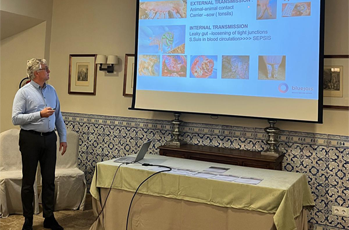
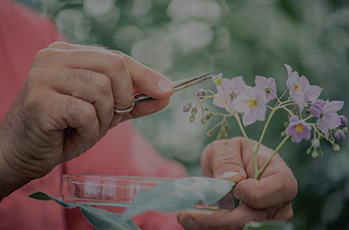



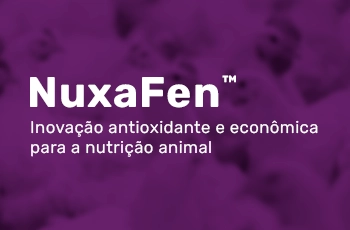
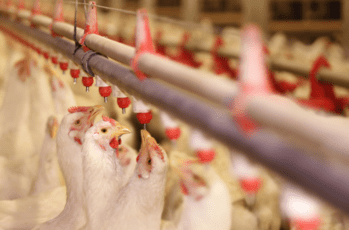
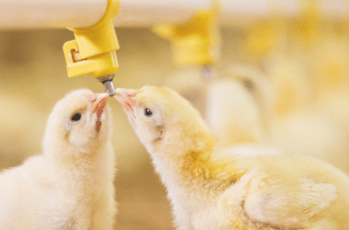
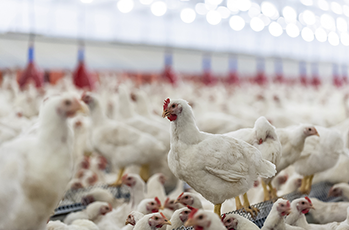
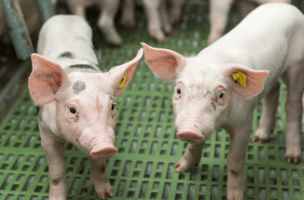
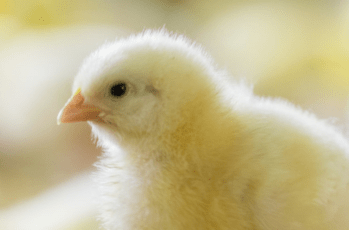
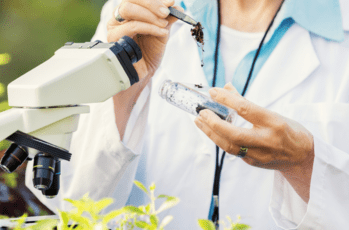
receive our newsletters.